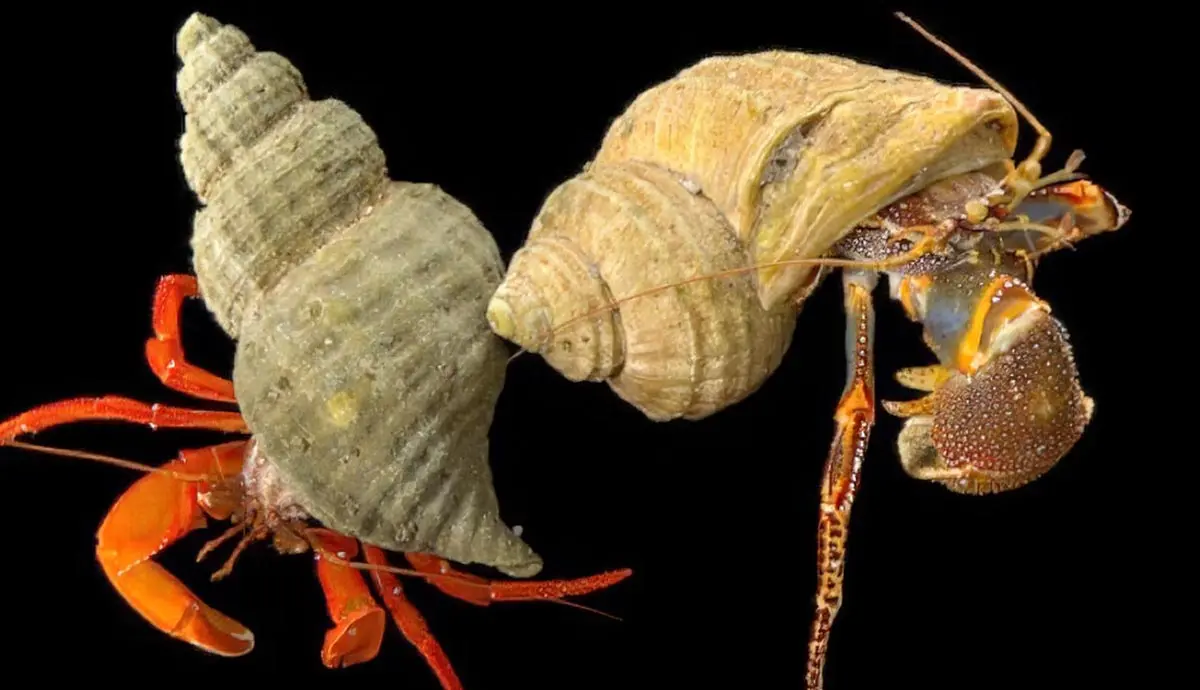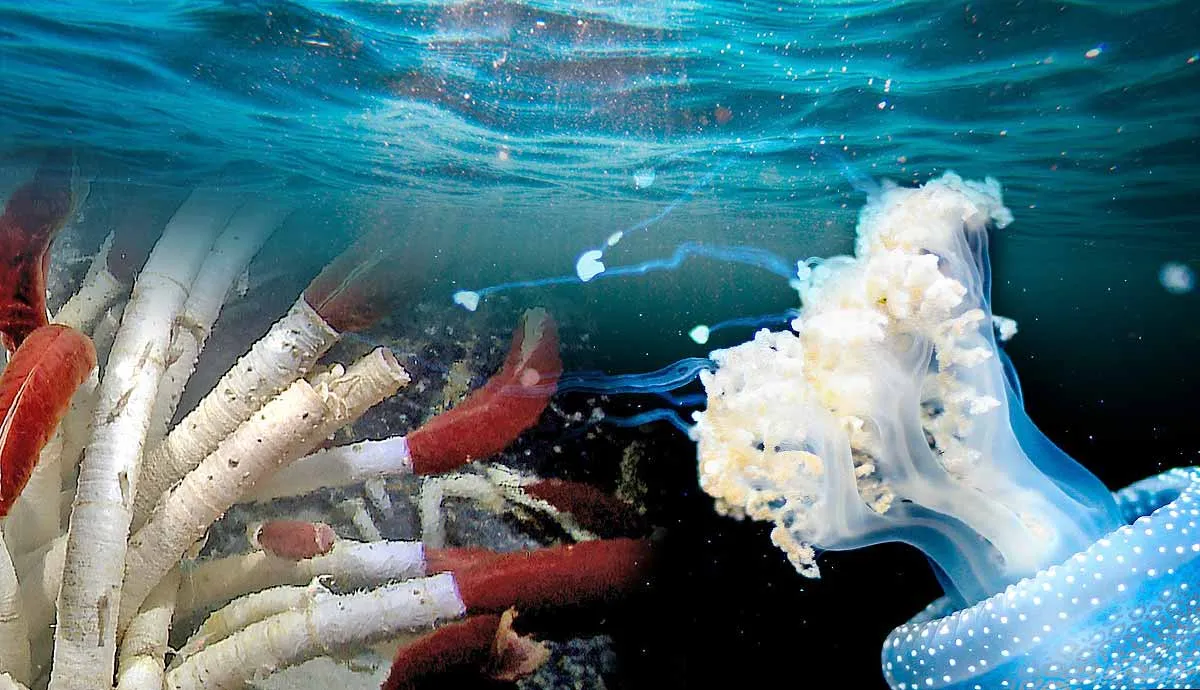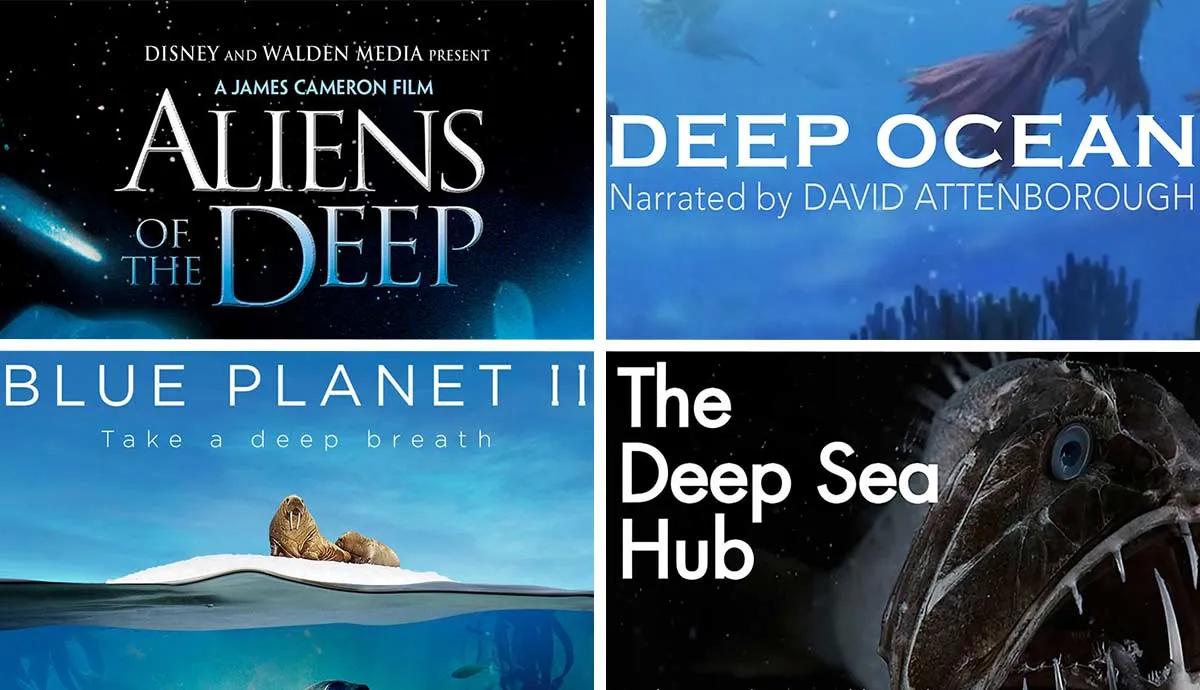Seashells have always held a certain allure, captivating beachcombers and marine enthusiasts with their intricate beauty. However, beyond their aesthetic appeal, seashells are also home to a remarkable array of sea animals. We will embark on an exciting journey to discover five unique sea creatures that make seashells their homes. From tiny mollusks to intriguing crustaceans, we will explore the diverse world of seashell-dwelling animals. So, grab your virtual diving gear, and let’s dive into the depths to uncover these fascinating creatures!
1. Hermit Crab

Let’s start our exploration of seashell-dwelling creatures with the ever-fascinating hermit crab. We have given these fascinating creatures an inaccurate name. First, despite being commonly referred to as crabs, they are not true, like blue crabs with a hard exoskeleton and can grow their shells. With hermit crabs, a rigid exoskeleton covers only the front part of their bodies, while the posterior section stays soft and vulnerable. To protect this delicate area, hermit crabs seek refuge inside the abandoned shells of other animals, such as whelks. Hermit crabs are more closely related to certain types of lobsters rather than true crabs.
Second, the name ‘hermit crab’ is misleading, implying a solitary lifestyle. However, these social creatures often live in large groups, sometimes over a hundred individuals, in their natural habitats. So, despite their name, hermit crabs show a gregarious nature, forming communities and engaging in interactions with their conspecifics. They also have seashell exchanges where they take over the seashell of the earlier crab when they outgrow their current shell.
2. Chambered Nautilus

Next is the enchanting chambered nautilus (Nautilus pompilius)—a bit of a time-traveling animal. Can you believe they’ve been gracefully navigating deep ocean reefs for over 480 million years, even before the time of dinosaurs? These incredible creatures live inside a shell that is truly a work of art, with intricate chambers providing a cozy home. That’s not all; the chambered nautilus constructs a series of gas-filled sections within its shell that help them control its buoyancy and depth.
While their eyes may be simple and can only sense darkness and light through pinhole-like openings, nautiluses have other impressive abilities. They can perceive water depth, detect current directions, and even feel current speeds. All this allows them to keep their balance and orientation in the water. And let’s not forget about their keen sense of smell! With this highly developed sense, nautiluses search for food and find their potential mates, navigating the vast ocean depths gracefully and precisely. During the day, nautiluses can be seen as deep as 2,200 feet (700 m) in reef slopes, but at night they move up to depths around 230 feet (70) under the surface to feed on small crustaceans like shrimps and crabs, fish, and even scavenging on the remains of other animals. They also lay their eggs in the ‘shallower’ waters where they feed.
Did you know that they are cousins of octopuses and squids and are known as cephalopods?
3. Cone Snail
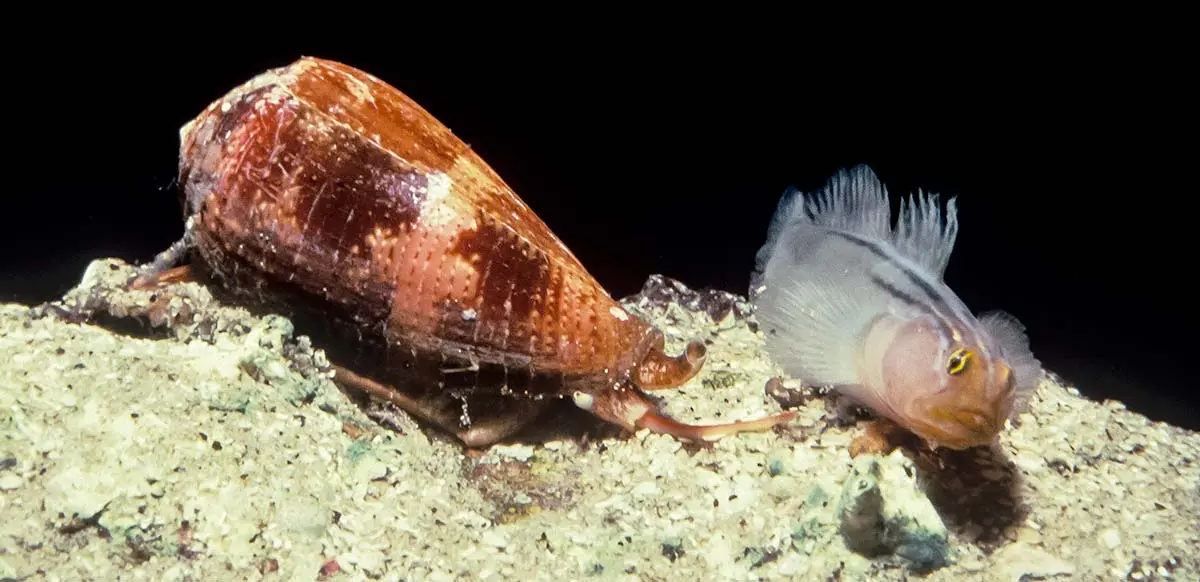
As we venture deeper into the realm of seashell inhabitants, we meet the intriguing cone snail. We might call it a deadly beauty – despite its beautiful shells. The geography cone snail is one of the most lethal members of nearly 500 species. Living within exquisitely patterned shells, the cone snail is a predatory gastropod that commands attention. While its shell offers protection, the real allure lies in its venom. The cone snail is equipped with a harpoon-like tooth armed with potent venom, immobilizing, and capturing its prey. It’s a prime example of nature’s remarkable adaptability. Collectors are often drawn to the intricately designed shells of the cone snail, appreciating their beauty and uniqueness despite the snail’s dangerous nature.
4. Queen Scallop
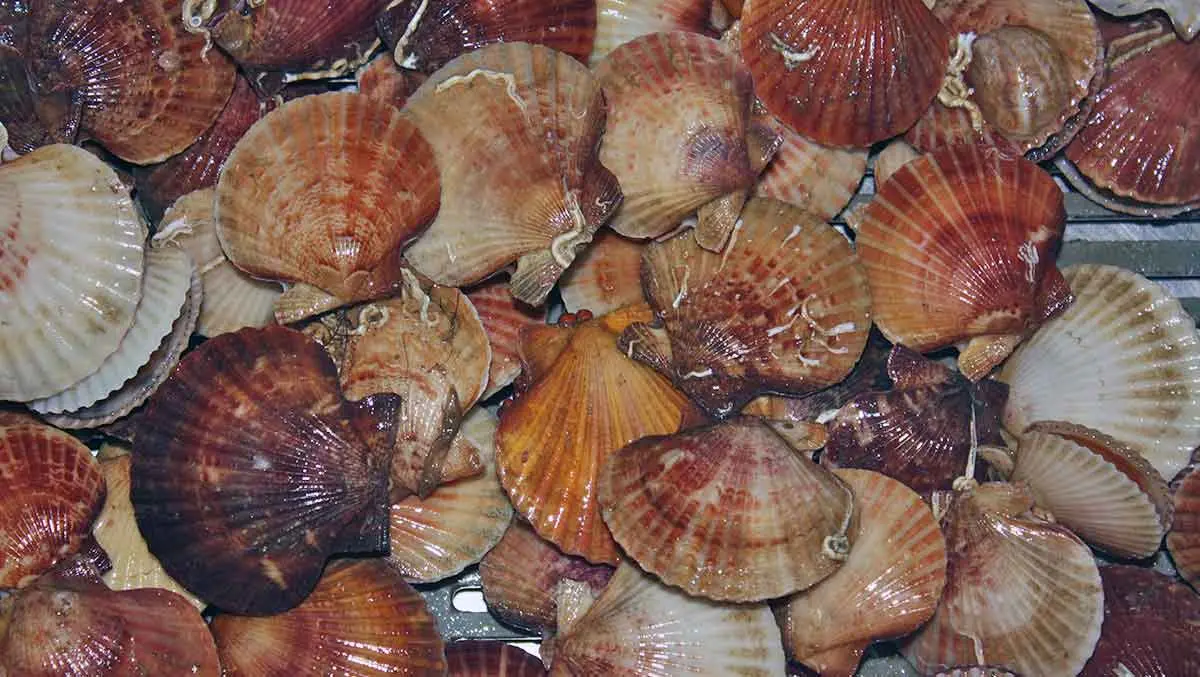
The queen scallop (Aequipecten opercularis) sustains itself by feeding on plankton. It typically lives at depths of up to approximately 130 feet (40 meters). Still, it has the remarkable ability to inhabit much deeper regions, reaching depths of up to 1,300 feet (400 meters) below sea level. This species highlights a wide distribution, spanning from the coasts of Norway down to the Canary Islands and the Mediterranean region. Within the North Sea, the queen scallop thrives abundantly, taking residence on sandy and gravelly sea beds.
What adds to the intrigue of the queen scallop is its ingenious use of its shell. Far beyond supplying mere protection, the shell acts as a propulsive mechanism. With graceful movements, these bivalves rhythmically open and close their shells, creating water currents that propel them forward. This remarkable adaptation allows the queen scallop to navigate its aquatic environment while efficiently ensuring its safety. Its shell’s versatility truly displays this extraordinary creature’s ingenuity and adaptability.
5. Cowry Snail

Finally, let’s dive into the captivating world of tropical oceans to discover the enchanting cowry snail. These marine gastropods have been capturing the attention of collectors and artists for centuries, thanks to their shells adorned with vibrant patterns. You’ll often find these exquisite shells nestled in the nooks and crannies of coral reefs, as the cowry snails use them as safe retreats. Cowry shells’ intricate patterns and glossy surfaces make them highly coveted and prized possessions among shell enthusiasts. It’s no wonder these treasures from the deep have been cherished throughout history for their undeniable beauty.
Conclusion
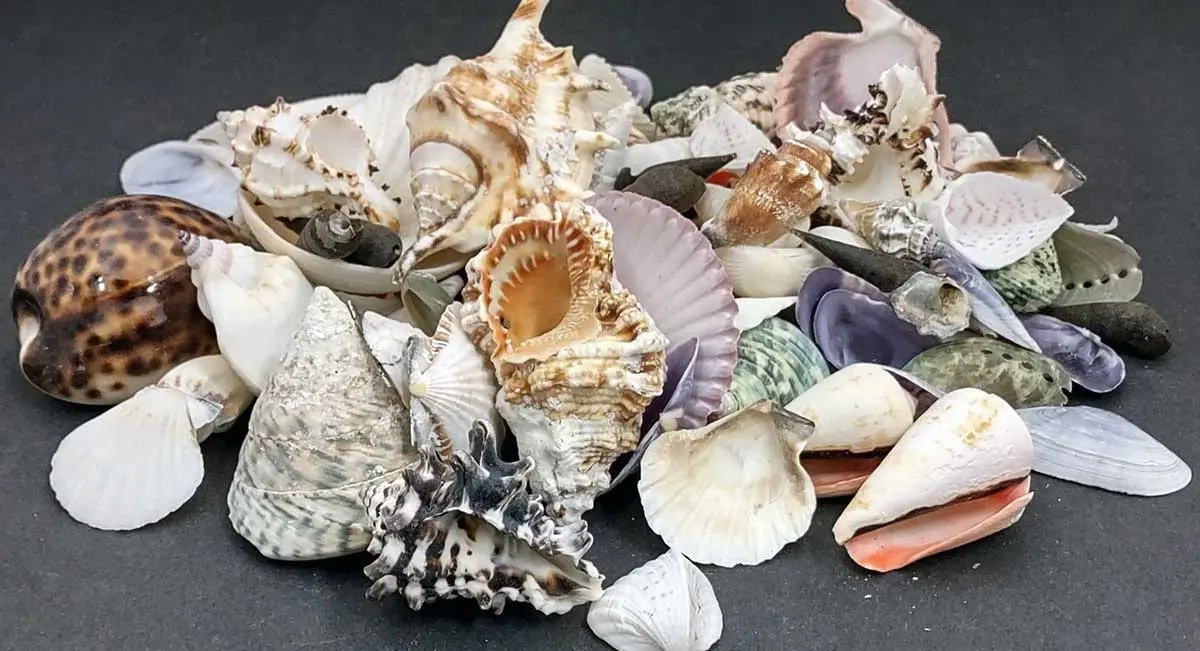
The world of sea animals that live in seashells is fascinating, full of unique and captivating creatures. Each animal has its own story, from the resourceful hermit crab to the ancient, chambered nautilus and from the venomous cone snail to the elegant queen scallop and stunning cowry snail. By exploring the diversity of sea creatures that call seashells their home, we gain a deeper appreciation for the wonders of the marine world. So, next time you stumble upon a seashell on the beach, remember the vibrant life that once inhabited its intricate chambers.
